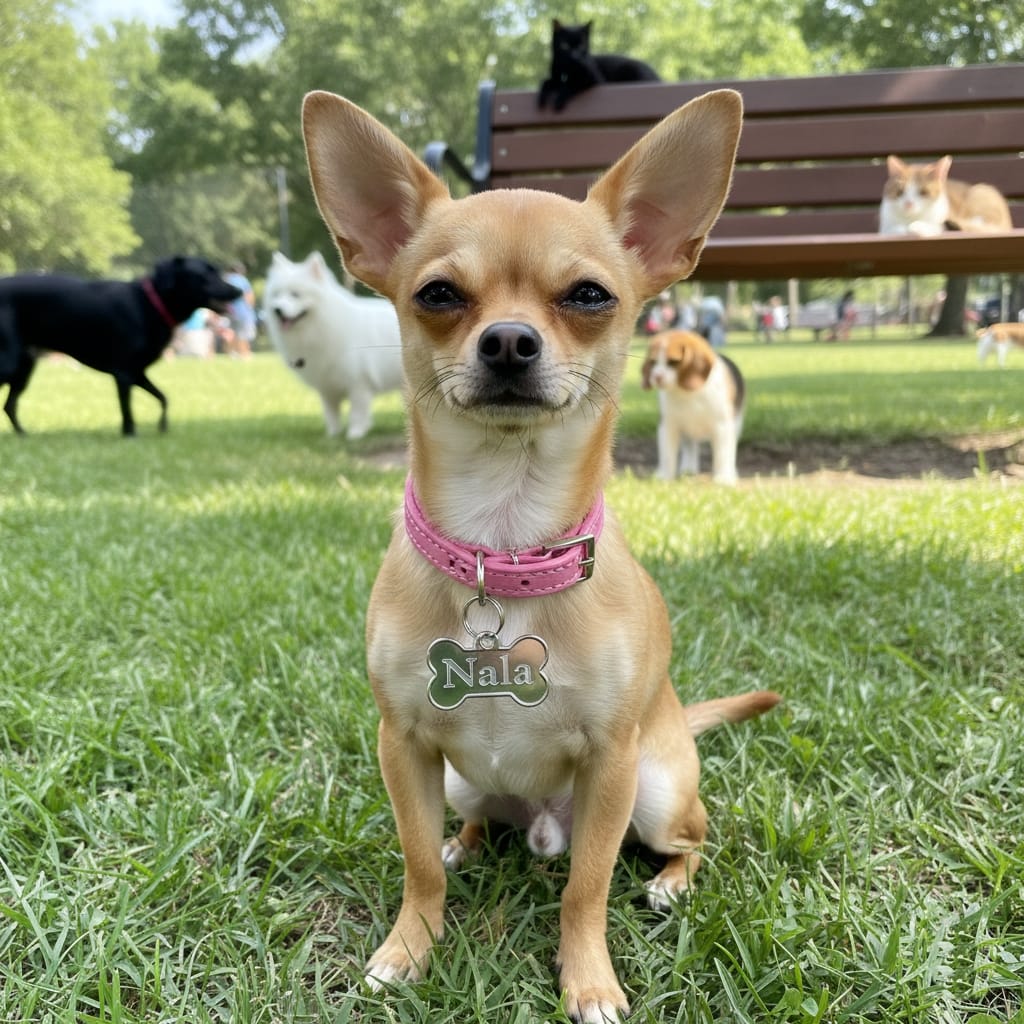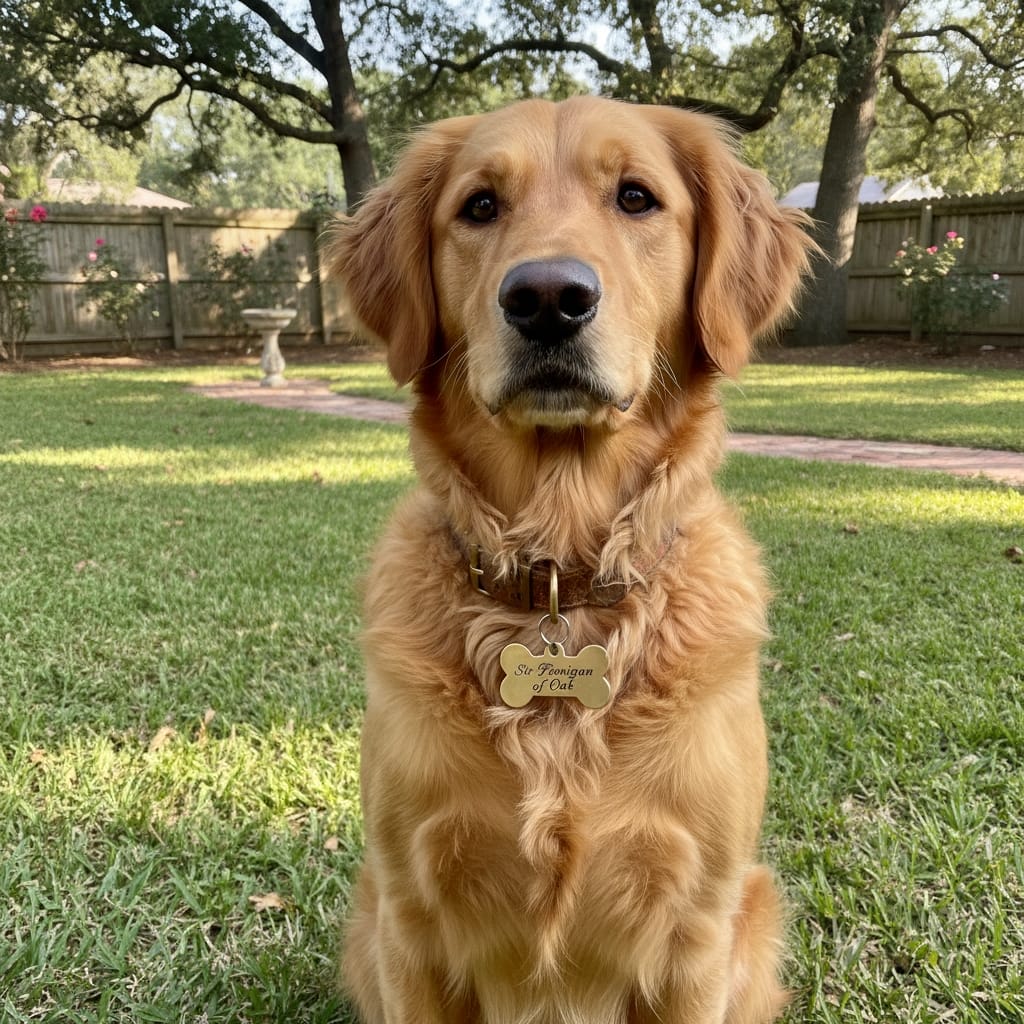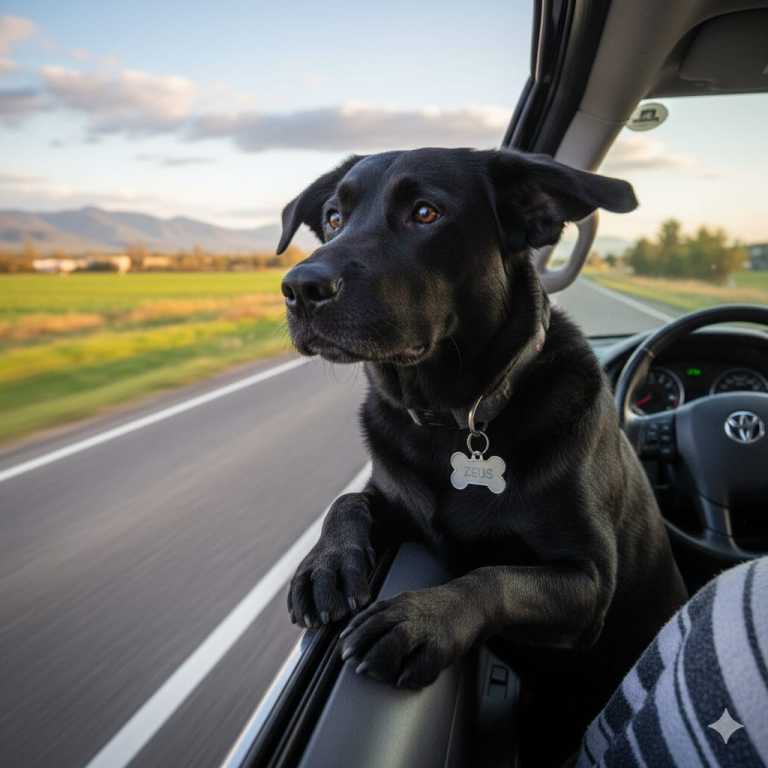How important is your dog’s name? To what extent would you go to ensure you choose the best name for your pup?
The right name helps with training and recall; the wrong one can cause confusion at home, at the park, and at the vet.
This guide walks through the 10 most common naming mistakes and how to avoid them, plus a quick checklist to help you choose a name that sticks.
What's Inside?
- Quick Criteria for a Great Dog Name
- Mistake #1: Picking names that sound like commands
- Mistake #2: Going too long or complicated
- Mistake #3: Choosing ultra-trendy or overused names
- Mistake #4: Hard to pronounce or said in different ways
- Mistake #5: Embarrassing, negative, or insensitive names
- Mistake #6: Ignoring sound clarity in real world settings
- Mistake #7: Mismatch with the dog’s vibe or your lifestyle
- Mistake #8: Too similar to family or other pets' names
- Mistake #9: Overdoing nicknames or changing names often
- Mistake #10: Not field testing the name
- How to Choose a Dog Name That Sticks
- Name Vetting Checklist (print friendly)
- Conclusion
Quick Criteria for a Great Dog Name
- 1–2 syllables, easy to repeat (e.g., Rex, Milo, Pippa).
- Clear, crisp sounds that carry: letters like K, T, P, D help cut through noise (e.g., Kona, Tito). Soft names like “Mo” can get lost.
- Not easily confused with common cues: sit, stay, down, no, come, fetch, drop, leave it. If “Bo” sounds like “no,” skip it.
- Not too similar to names in your household (people or pets). Change the starting letter or vowel if there’s overlap.
- Comfortable to call out in public and at the vet. If you’d hesitate to shout it at the park, rethink it.
- Simple, consistent pronunciation. Everyone in the family should say it the same way.
- Distinct in your circle. If there are three Lunas at your dog park, consider a close alternative.
- Works as a short “call name” if you want a longer formal name (e.g., Sir Finnigan of Oak → Finn).
- Passes the shout test: call it across a yard or through a doorway; it should be easy to hear.
Mistake #1: Picking names that sound like commands
If a name sounds like a command, your dog may get confused.
Bo can sound like no. Kit can sound like sit. Ray, Shay, or Jay can sound like stay. Scout can sound like out. Fletch can sound like fetch. Oakley can sound like okay. Levi can sound like leave it. Stan can sound like stand. Ace or Jace can sound like place.
Before you decide, say the name next to your main commands—sit, stay, down, no, come, heel, off, out, drop, fetch, leave it, okay. Try it in a quiet room and outside. If they sound alike, pick a different name.
You can often keep the feel by swapping a letter or making the name a bit longer. Bo can become Bowie or Bodhi. Kit can become Kip. Ray can become Rex or Rio.
If the clash is with “okay” (the word you use to tell your dog they’re free), change that word to “Free” or “Break,” or choose another name, like Ranger instead of Scout.
Mistake #2: Going too long or complicated
Long or fancy names look fun on paper, but they’re hard to use in real life.
You need a name you can say fast and repeat clearly. If it takes a few seconds to get it out, recall gets slower, and people start using different nicknames. That mix of sounds can confuse your dog.
If you love a long, formal name, choose a short “call name” for daily use. Aim for one or two syllables. Sir Finnigan of Oak can be Finn. Lady Seraphina can be Sera. Theodore can be Theo or Teddy. Penelope can be Penny. Bartholomew can be Bart.
Try this quick test: say the name three times in a row while walking or clapping. If you stumble or run out of breath, it’s too much. Also try the shout test across a yard or down a hallway. If it’s not easy to hear and repeat, pick something shorter.
Most important: agree on one main name at home. If one person says “Cinnamon,” another says “Cinna,” and a third says “Minnie,” your dog will learn more slowly.
Mistake #3: Choosing ultra-trendy or overused names
Popular dog names aren’t “bad,” but they can cause mix-ups.
If there are three Lunas or two Coopers at your park or vet clinic, your dog may hear their name all the time and stop treating it as special. You may also find yourself answering when someone else calls their dog.
How to check: ask your vet, trainer, or friends which names they hear most. Look at top-name lists for your area. If your favorite shows up everywhere, consider a small twist that keeps the same feel.
Easy swaps if you love a popular name:
- Luna → Lumi, Luma, Lyra
- Bella → Bea, Nella, Belle (if it’s less common near you)
- Max → Pax, Mack, Mako
- Charlie → Arlo, Marley, Chaz
- Cooper → Booker, Porter, Crosby
If you still want the popular dog name, that’s fine; just train a strong recall and be ready for occasional mix-ups at busy places.
Mistake #4: Hard to pronounce or said in different ways
If a name is hard to say, or people say it in different ways, your dog will learn it more slowly.
When guests ask how to say it, or family members stress different parts, your dog hears mixed signals.
Choose a name that is easy to say and hear, ideally one or two syllables. Make sure everyone says it the same way. Pick a spelling that matches the sound you want. If you love a long or complex name, use a short call name for daily use. Vivienne can be Vivi, Alejandro can be Alex, Genevieve can be Evie.
Teach the name with short practice.
Say the name once, reward eye contact, pause, then repeat for a minute or two each day. If needed, tell your vet or daycare how to say it.
Quick check: ask three friends to read the name and say it out loud. If most get it wrong, choose an easier call name or adjust the spelling.
Mistake #5: Embarrassing, negative, or insensitive names
Names that sound rude, scary, or offensive can be awkward in public and can create negative feelings.
If you feel uneasy saying the name, you may hesitate or change your tone, which makes training harder. Examples to avoid include Killer, Stinky, Poops, and any name that uses a slur or stereotype.
Pick a name you feel good saying anywhere. Picture it at the vet, in a crowded park, or on a name tag. Avoid names tied to hateful ideas or painful events. If you want a funny name, choose something light and friendly rather than gross or harsh.
Quick check: shout the name in your yard, imagine hearing it in a waiting room, and think about a child saying it. If any of those make you cringe, choose another name.
For gentler swaps, try Bear or Ranger instead of Killer, Chili or Biscuit instead of Stinky, and Poppy or Pip instead of Poops.
Mistake #6: Ignoring sound clarity in real world settings
Parks, wind, traffic, and echo can make soft names hard to hear.
Names with clear, sharp sounds are easier for dogs to notice. Letters like K, T, P, and D often carry better. A short, soft name like Mo can fade in noise, while Milo or Koko is easier to hear. Many people also find names that end in a vowel, like “-o” or “-a,” are simple to call.
Test the name in everyday noise.
Call it from another room, with the TV on, or outside with wind or traffic. If it gets swallowed up, pick a name with stronger consonants or add a syllable. You can keep the same feel by making a small change. Mo can become Milo or Koko. Lou can become Luca. Zoe can become Zola or Ziggy.
If your dog perks up right away when you call its name in a busy place, you are on the right track. If not, adjust the sounds until it cuts through.
Mistake #7: Mismatch with the dog’s vibe or your lifestyle
A name sets the tone for how people see your dog and how you talk to them.
If your pup is gentle and shy, a harsh or wild name can feel off. If your dog is bold and bouncy, a very soft name may not fit. Think about size, energy, and personality.
A calm golden might suit Willow, Sunny, or Basil. A lively terrier might suit Kiki, Rocket, or Turbo. A steady, confident dog might fit Rocco, Hugo, or Greta.
Consider your own style too.
If you like classic names, choose one you will enjoy saying for years. If you plan to do training classes or dog sports, pick a clear, simple name that sounds good in a busy space. If you love irony, that is fine, as long as the name is easy to use and feels friendly in public. Tank for a small dog can be fun, but make sure you still like calling it out loud.
A simple test helps. Spend a day with your shortlist and say each name during normal moments. If it feels natural and you smile when you say it, you are close. If it feels forced, try another.
Mistake #8: Too similar to family or other pets’ names
If names sound alike, you will get mix-ups.
Dogs may both respond, and recall gets weaker. This happens when names rhyme or share the same start or rhythm. Think Mia and Nia, Max and Jax, Jack and Jake, Buddy and Bodhi, Coco and Koko, Theo and Leo, Ella and Bella.
Pick names with different first letters, different vowels, or a different number of syllables. If your cat is Molly, choose June or Pepper instead of Polly or Ollie. If your partner is Anna, skip Nala or Hanna.
Do a quick check from another room with the TV on.
Call one name once. If more than one pet responds, the names are too close. If you cannot change a name, teach name focus: say one dog’s name, reward only that dog for eye contact, then switch. Keep sessions short.

Mistake #9: Overdoing nicknames or changing names often
Using lots of nicknames can blur the main name.
Your dog needs one clear cue. If today you say Riley, tomorrow you say Riles, and later you say Mr. R, the name stops meaning “look at me.”
Pick one main name for training and recall. Use it for meals, walks, and practice. If you want nicknames, keep the same first sound and rhythm. Riley can be Rye. Penelope can be Penny. Theodore can be Theo. Avoid switching between very different names like Penelope, Nell, and Poppy.
Teach the name in short sessions. Say the name once.
When your dog looks at you, reward. Pause a few seconds and repeat for a minute. Do a few mini sessions each day. Do not repeat the name over and over if your dog does not respond. Say it once, wait, then help with a clap or a kiss noise and reward when they look.
If you are renaming an adult dog, commit to the new name and pair it with rewards for a week. If needed, use NewName OldName together for a few days, then drop the old one.
Mistake #10: Not field testing the name
A name that works in your kitchen may fail in noise.
Do a shout test in the yard and down a hallway with the TV on. If it is hard to hear or awkward to say, choose another. Picture a vet tech calling it in a waiting room. If that makes you pause, skip it.
Say the name before your main commands. If the sounds blend, change it. Try three to five names for 24 to 48 hours each and reward eye contact when you say it. Keep the one that gets the fastest, happiest response.
How to Choose a Dog Name That Sticks
- Brainstorm 20 to 30 names. Mix short and medium options. Write them down.
- Filter with simple rules. Aim for 1 to 2 syllables, easy to say, clear in noise, not close to common commands, not similar to names in your home, and comfortable to use in public.
- Do sound checks. Say the name next to your main commands. Do a shout test in a hallway or yard. Try it with the TV on or outside with traffic.
- Shortlist 3 to 5 names that pass these tests.
- Try each name for 24 to 48 hours. Say it once, reward eye contact, then pause. Note which name gets the fastest, happiest response.
- Get family input. Make sure everyone says the name the same way and likes using it.
- Decide and stick to it. Use the chosen name for all training and daily routines. Keep nicknames to a minimum at first.
Name Vetting Checklist (print friendly)
Print this list and tick as you go.
- 1 to 2 syllables, easy to say and repeat
- Not close to common commands you use: sit, stay, down, no, come, heel, off, out, drop, fetch, leave it, okay
- Clear sounds that carry in noise
- Passes a shout test in the yard, down a hallway, and with the TV on
- Different from names of people and pets in your home
- Simple to pronounce the same way for everyone
- Positive and comfortable to say in public and at the vet
- Distinct at your park or in your circle
- Works with one simple nickname if you want
Conclusion
A good dog name is short, clear, and positive.
Avoid names that sound like commands or match names in your home. Test the name in real settings, try it with your main commands, and see how your dog responds. Pick the one that is easy to say, easy to hear, and gets quick eye contact. Then use it the same way every day.
Want help picking names?
Tell me about your dog, such as breed or mix, size, age, personality, and any themes you like. I can suggest a short list that fits. Send an email to: info@newdognames.com





Leave a Comment